TIER 1 UNIVERSITY
TRANSPORTATION CENTER (UTC)
Sponsored by the Office of the Assistant Secretary for Research and Technology in the U.S. Department of Transportation
VOL. 8 | ISSUE 1 | SPRING 2024
INSPIRE-UTC



Sponsored by the Office of the Assistant Secretary for Research and Technology in the U.S. Department of Transportation
INSPIRE-UTC


I am pleased to welcome you to the latest edition of the INSPIRE University Transportation Center (UTC) newsletter. Since our last publication, we have made significant progress in our research, outreach, and workforce initiatives.
This edition begins with a highlight of a seminar we hosted with Dr. Anne Kiremidjian from Stanford University. Her insights into community resilience to post-natural disasters, were very informative. Dr. Kiremidjian's focus on time-dependent risk assessment and prudent decision-making in reconstruction phases provided valuable perspectives that impact our ongoing research.
Awarded in December of 2016 by the U.S. Department of Transportation, the five-year INSPIRE UTC is a Tier 1 University Transportation Center with a research priority of preserving the existing transportation system as part of the UTC Program (https://www. transportation.gov/utc/2016-utc-grantees) that was authorized under the Fixing America’s Surface Transportation Act.

We are excited to share the news of a $2.5 million funding award to INSPIRE UTC investigator, Dr. Hongyan Ma. This project aims to innovate supplementary cementitious materials (SCMs) from waste products while storing carbon in concrete. This research promises to impact the concrete industry by developing economically feasible, carbon-negative alternatives to traditional materials.
Adding to our research efforts, Dr. Grace Yan – a member of the Center for Intelligent Infrastructure (CII, an envelope organization for the INSPIRE UTC) delivered a keynote at the Distinguished Workshop of Climate Change and Zero Carbon Future in Hong Kong. Her talk on high-fidelity hazard models for climate change adaptation drew international attention and reinforced our commitment to tackling climate resilience challenges.
We are proud to announce that Dr. Sajal Das, another CII member, has been elected to the National Academy of Inventors (NAI) 2023 class of Fellows. Dr. Das’s contributions to computer science and his innovative spirit have advanced the field and brought distinction to our institution.
CONSORTIUM MEMBERS
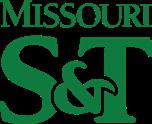







This edition also highlights new INSPIRE UTC team members. Dr. Ritesh Sharma's work on 3D reconstruction and SLAM for drone navigation exemplifies the research taking place at the INSPIRE UTC. Dr. Guna Sekaran is a Big Data Scientist. Ryan Swan is an undergraduate who helps build custom drones.
Our feature on new robotic technologies for bridge inspection demonstrates our commitment to enhancing infrastructure safety and efficiency. The development of the Bridge Inspection Robot Deployment Systems (BIRDS) marks an advancement in bridge inspection methodologies, aligning with the latest National Bridge Inspection Standards (NBIS) revisions.
In our outreach efforts, the Kaleidoscope Discovery Center continues to reach over 2500 K-18 students through robotics and engineering programming. The success of the FIRST Lego League and Missouri Future City Competition, along with new initiatives like the high school Future City program, underscores our dedication to inspiring next generation STEM leaders.
We remain committed to advancing our research, fostering educational excellence, and engaging with our community. We invite you to explore the featured articles and updates in this edition and encourage you to visit our website at https://inspire-utc.mst. edu for more information about our upcoming events and webinars.
Genda Chen, Ph.D., P.E., F. ASCE, F. SEI, F. ISHMII, F.SPIE, F. TGIDirector, INSPIRE University Transportation Center
Director, Center forIntelligent Infrastructure

On Thursday, April 4, 2024, CII and the Department of Civil, Architectural, and Environmental Engineering had the privilege of hosting a captivating seminar featuring Dr. Anne Kiremidjian from Stanford University. Held in Missouri S&T's new Innovation Lab, the seminar provided invaluable insights into the resilience of communities in the aftermath of natural disasters, drawing upon Dr. Kiremidjian's wealth of expertise in earthquake hazard, risk, and resilience modeling.
Dr. Kiremidjian, a distinguished figure in earthquake engineering, illuminated the complex dynamics of community resilience. She emphasized the critical role of post-disaster recovery strategies in facilitating the swift and effective restoration of communities following catastrophic events such as earthquakes, hurricanes, and floods.
A central theme of Dr. Kiremidjian's discussion was the temporal aspect of risk assessment. Attendees gained a deeper understanding of recent advancements in time-dependent risk assessment, which play a pivotal role in enabling communities to proactively prepare and allocate resources for recovery efforts.
Furthermore, Dr. Kiremidjian underscored the importance of prudent decision-making in the reconstruction phase. She highlighted the need to optimize reconstruction decisions under resource constraints, emphasizing the significance of identifying strategies that maximize recovery outcomes while operating within limited resource parameters.
Real-world examples, including insights gleaned from data on Indonesian earthquakes such as the Lombok 2018 events, illustrated the practical application of analytical models in guiding reconstruction efforts. Attendees were presented with compelling evidence of how data-driven insights can empower communities to make informed decisions that expedite the recovery process while minimizing resource wastage.
As we reflect on the seminar, it becomes evident that Dr. Kiremidjian's insights have profound implications for our ongoing research initiatives aimed at enhancing community resilience. By bridging the gap between research and practice, we are committed to empowering communities with the knowledge and tools needed to navigate the complexities of disaster recovery.
About Dr. Anne Kiremidjian:
Dr. Anne Kiremidjian is a member of National Academy of Engineering and the C. L. Peck, Class of 1906 Professor in the School of Engineering at Stanford University. With a distinguished career spanning seismic hazardmapping, structural health monitoring, and risk assessment, Dr. Kiremidjian is arevered figure in the field of earthquake engineering. Her numerous accolades, including the John Fritz Medal and an upcoming Honorary Doctorate from Aarhus University, underscore her remarkable contributions to the field.

The College of Arts, Sciences, and Education (CASE) is dedicated to the discovery of science and the understanding of the intricate relationship between cultures and the physical world. Our humanists tackle ethical questions arising from technological advancements, while our artists creatively envision a future that strives for a better quality of life. The Center for Intelligent Infrastructure is at the forefront of pioneering technologies for developing future smart cities and transportation infrastructure, significantly enhancing Missouri S&T’s national academic reputation. Researchers in CASE are privileged to collaborate with this Center to address the societal impacts of this technological revolution, ensuring that human factors are integrated to make future infrastructure safer, more convenient, and enjoyable.
Dr. Mehrzad Boroujerdi Dean, College of Arts, Sciences, and Education

A Missouri S&T research team was recently awarded $2.5 million in funding to find new ways to turn waste products into supplementary cementitious materials (SCMs) – plus use those materials to store carbon permanently in concrete.
“Years ago, SCMs were used as a cheap option to replace some Portland cement and also have a stronger and more durable concrete mixture,” says Dr. Hongyan Ma, Francisco Benavides Scholar and associate professor of civil engineering at S&T. “There is now a severe shortage of these materials, so my team is looking at creative ways to develop new alternatives that are carbon-negative and will make the industry greener.”
Ma also serves as director of S&T’s Laboratory of Future Cements and Carbon-Negative Initiatives. He says one of the most common SCMs has traditionally been coal combustion residue, or fly ash, but a large percentage of this type of waste is not currently usable in cement. According to the Electric Power Research Institute, 2.5 billion tons of this type of waste have been disposed of in ponds and landfills throughout the United States.

Hongyan Ma
use Missouri S&T’s semi-industrial scale concrete batching plant for demonstrating carbon-negative materials and processes for concrete production.
Ma’s two-year research project, which received a $2 million grant from the U.S. Department of Energy and $500,000 in matching funds from S&T and industry partners, aims to make this unusable waste into something of value.
The research will also cover the ash from municipal solid waste incinerators, steel slag, recycled concrete and other waste products. The team is currently developing processes to break down the structure of the solid wastes in ways that will also allow them to store CO₂.
The carbon that is combined with these new SCMs will primarily come from the flue gases of power plants and the manufacturing industry, Ma says. By using CO2 directly from the flue gasses, as long as the concentration is high enough, his team will not have to use energy-intensive carbon-capture methods.
Ma says this project is designed to make a significant difference in the concrete industry in the near future, as opposed to focusing on more general, long-term concepts.
“The work we are conducting is mission-oriented,” he says. “Part of our research is to make sure what we develop is economically feasible. It can’t be too expensive, as it needs to be a realistic option to support the supply chain.”
Original Version Posted November 6, 2023 - Missouri S&T eConnection
Dr. Guirong (Grace) Yan, associate professor of civil, architectural and environmental engineering, gives akeynote speech at the Distinguished Workshop of Climate Change and Zero Carbon Future onThursday and Friday, December 7-8.
Through the talk titled “High-fidelity Hazard Models for Facilitating Climate ChangeAdaptation, ” she shared her passion on tornado resilience, coastal resilience and climatechange adaptation. Attendees included individuals from Hong Kong, the U.S., Canada, China,Japan and Korea.
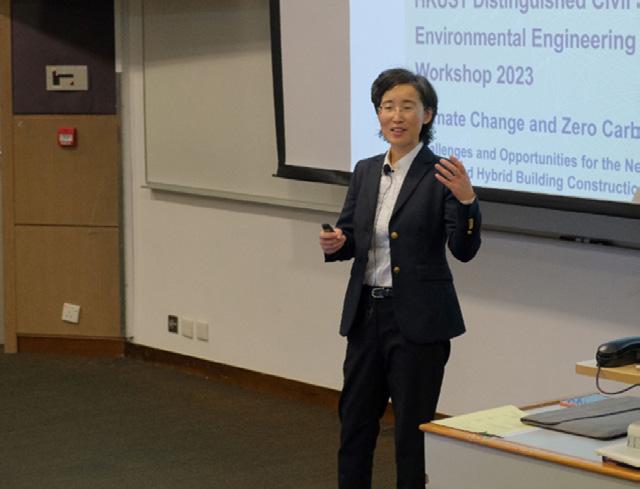
Dr. Sajal Das, Curators’ Distinguished Professor and Daniel St. Clair En-dowed Chair of computer science at Missouri S&T, has been elected to theNational Academy of Inventors (NAI) 2023 class of Fellows.

“It feels wonderful to be recognized for my many inventions and their in-fluence in my field,” Das says. “I have long held my colleagues who are NAIFellows in high esteem, and I am glad to join their ranks.”
NAI Fellows are elected annually by a selection committee. The committeenoted that Das was selected because he has “demonstrated a highly prolificspirit of innovation in creating or facilitating outstanding inventions thathave made a tangible impact on the quality of life, economic development,and welfare of society.
Das holds five patents for his inventions and has directed over $23 millionin research projects. He has been published in over 400 academic journals,over 530 conference papers, and 59 book chapters, and he has written fourbooks. He is also a Fellow of the Institute of Electrical and Electronics Engi-neers and the Asia-Pacific Artificial Intelligence Association.
Das is recognized as an expert across several areas of the computer science field, including cyber-physical systems and smart environments, internet of things, wireless and sensor networks, mobile and pervasive computing, high performance computing, machine learning, data science, and cyber security. He was recognized as being among the top 2% of researchers cited for his field last year, as well as for his entire career, in an analysis published by Stanford University.
He has been a member of the Missouri S&T faculty since 2013 and served as chair of computer science from 2013 to 2017. He previously held faculty positions at the University of Texas at Arlington from 1999 to 2013 and University of North Texas from 1988 to 1999.
He also served as a program director for the National Science Foundation from 2008 to 2011, and managed research grants and proposals focused on wireless networking, sensor networking, mobile and pervasive computing, and cyber-physical systems.
Das received the University of Missouri System President’s Award for Sustained Career Excellence in 2018 and the Distinguished Alumnus Award from the Indian Institute of Science, Bangalore in 2021 for his contributions to the fields of mobile and pervasive computing, wireless and sensor networks, and for research on societal impact.
He earned a Ph.D. in computer science from the University of Central Florida, a master’s degree in computer science from the Indian Original Version Posted December 14, 2023 - Missouri S&T eConnection
We are proud to recognize the outstanding contributions of Dr. Grace Yan for her exceptional national and international research reputation. Her work in high-fidelity simulation of tornadoes and tornado-community interactions has significantly advanced tornado resilience efforts in Tornado Alley and the Southeastern USA. In addition, her pioneering research on multi-scale, multi-phase wind-surge-wave interactions has been instrumental in quantifying the combined loadings on coastal structures. This groundbreaking research is facilitating the development and reinforcement of coastal infrastructure.
This recognition also reflects her dedication to translating research findings into practical applications, particularly through her contributions to the ASCE Building Standards. Her enthusiasm and commitment to advancing engineering practices continue to inspire and lead the way in both tornado and coastal resilience.
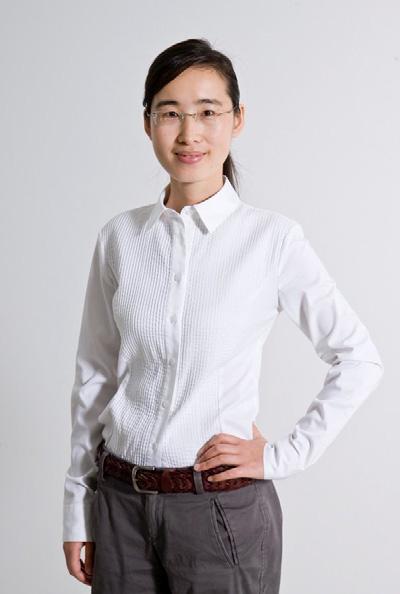
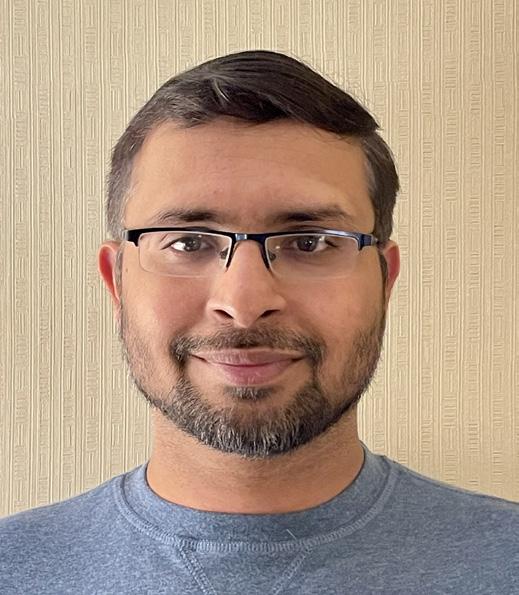

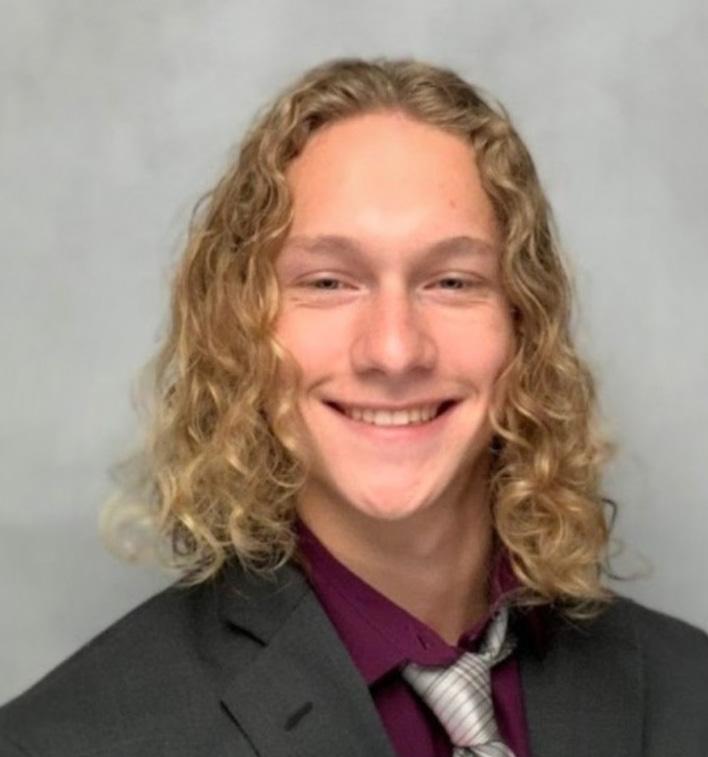
Dr. Ritesh Sharma is currently a postdoctoral researcher at the Center for Intelligent Infrastructure at Missouri University of Science and Technology. His current research focus is on 3D reconstruction (for creating digital twins) and SLAM for drone navigation beyond the line of sight for intelligent infrastructure inspections. Previously, he graduated with a PhD degree in Computer Science from the University of California, Merced, where his research focus was on AI (artificial intelligence) path and motion planning for multi-agent navigation. He also holds an MS degree in Computer Science from Oregon State University, where his research focus was on scientific visualization. With a diverse research background and interest in computer graphics, visualization, animation, robotics, geometry processing and modeling, AI path planning, motion planning, and machine learning, he has worked at multiple institutes, including Palo Alto Research Center, Hasso-Plattner Institute, Wolfram Research, Amazon Robotics, and Passur Aerospace Inc. He has published his research works at various research avenues such as SIGGRAPH ASIA, IEEE VIS, ACM I3D, CGF, C&G, CAVW, Eurographics, EuroVis, and Building Simulation, among others.
Dr. Guna Sekaran is also currently a postdoctoral researcher at the Center for Intelligent Infrastructure at Missouri University of Science and Technology. He is a skilled Big Data Scientist and Researcher who has worked across various fields, including climate change, healthcare applications, and intelligent transportation systems. He holds a Ph.D. in Information Technology and Engineering from the Vellore Institute of Technology, where he wrote his dissertation on leveraging big data analytics to explore the effects of climate change on disease dynamics. He worked extensively on projects integrating artificial intelligence to solve complex healthcare and urban transportation issues, spearheaded many funded research projects, and was the Principal Investigator on the deep convolutional neural network-based early diagnosis system for non-proliferative diabetic retinopathy, supported by a substantial grant from the Indian government. His technological contributions include the development of predictive models for healthcare, environmental science, and intelligent systems, which have been published in over 40 peer-reviewed journals and conference proceedings. He is skilled in many programming languages and data analysis tools, which he has applied to his machine learning, IoT, and cloud computing research. He has received multiple awards, including the Young Investigator Award, highlighting his contributions to science and technology.
Ryan Swan is a sophomore undergraduate at Missouri University of Science and Technology studying Mechanical Engineering and minoring in Computer Science and Electrical Engineering, Ryan has cultivated a strong academic background featuring a 4.0 GPA and courses in mechanical design, manufacturing processes, and computational sciences, among others. His technical skill set has been further honed through hands-on experience as the Science Actuation Lead on a Mars Rover Design Team. In his new role as Science actuation lead, he will lead the design of an integrated science system, encompassing a 3-axis gantry, microfluidics, and custom spectrometers. He also previously engineered a water distribution system featuring a peristaltic pump and various mechanical components. In collaboration with his colleague, Ryan designed a custom fluorescence spectrometer. In addition, he has innovated a custom copper electroplating setup to
Learn about science, engineering and transportation at the 2024 National Summer Transportation Institute. The week-long residential summer camp will be held on the Missouri S&T campus. Activities will include hands-on labs, field trips and presentations by professionals working in transportation related fields.
PROGRAM DETAILS
The program includes two identical week-long sessions for rising 10th–12th graders. Limited to 20 students (10 per session).
` Session I: July 14–19, 2024
` Session II: July 21–26, 2024
` Cost: Free of Charge
` Application Deadline: May 17, 2024
` A copy of high school transcript.
` A copy of ACT/SAT/PSAT scores (if available).
` One letter of recommendation from a school counselor.
` One letter of recommendation from a computer science, mathematics, pre-engineering, or science teacher.
Counselor and teachers to email recommendation letters directly to Dr. David Wang, program coordinator, at y.wang@mst.edu, with “NSTI recommendation letter” in subject line.
` One-page typed essay describing your career objective(s), interest in transportation, and how NSTI can assist you in reaching your goals (double-spaced, Times New Roman 12-point font, one-inch margins).
Questions? Contact Dr. Jenny Liu, director of NSTI, at jennyliu@mst.edu



The primary goal of bridge inspection is to ensure that structures are safe for the traveling public. Since the inception of the National Bridge Inspection Standards (NBIS), most updates to the NBIS have thus been made when new lessons are learned from bridge failures over time. However, in recent years, inspection data are increasingly being used to support a more proactive approach of asset management such that bridge preservation enables structures that are not only safe but also can be maintained in a manner that minimizes life-cycle costs. This broadening of inspection scope requires a significant shift in practice from fully visual inspection to partially visual inspection supplemented with advanced technologies such as remote sensing, nondestructive evaluation (NDE), and structural health monitoring (SHM). These technologies enable the implementation of objective decision-making processes in asset management and the understanding of infrastructure resilience.
The latest NBIS revision , which requires inspection of bridges on all public roads, including tribally owned, federally owned, and private bridges with at least one end connected by a public road, reflects a shift toward risk-based bridge inspection intervals: (1) up to 48 months for routine inspection and 72 months for underwater inspection based on bridge component conditions and (2) up to 72 months for inspections with more rigorous methods based on the consideration of condition and other factors that will allow for routine, underwater, and nonredundant steel tension member inspections. The new Specifications for the National Bridge Inventory (SNBI) expands component level ratings. These changes in NBIS and SNBI will not be implemented until the Calendar Year 2028 since bridge owners must, in response, develop regulation and policy changes and modify relevant tools, models, and approaches and the Federal Highway Administration (FHWA) must develop federal metrics and data collection mechanisms.
To meet the FHWA requirements for new data collection, INSPIRE University Transportation Center has developed a mobile test facility referred to as Bridge Inspection Robot Deployment Systems (BIRDS) for the field tests of real-world bridges. Particularly, the INSPIRE Center has invented a series of new robots that are interactive with bridges for high-quality inspection tasks following three strategies:
1. A hybrid flying and traversing vehicle is attached to bridge girders as a stationary inspection platform to inspect bridge decks, girders, and piers and collect high-quality data from RGB and infrared cameras as well as a lidar scanner.
2. An unmanned aerial vehicle (UAV) carries and launches a small lightweight crawler to inspect steel members and connections in great details through a microscope or a crack probe.
3. An UAV is equipped with an aerial manipulator for nondestructive testing, such as ground penetrating radar, of reinforced concrete members to detect and locate defects.
Fig. 1 shows the prototype of a hybrid flying and traversing vehicle that was tested at the 10th Street steel-girder bridge in Rolla, MO. The hexacopter weighs approximately 40 N. Once attached to a steel or concrete girder, it provides a stationary platform for cost-effective rapid, consistent, reliable data collection. Specifically, equipped with RGB and infrared cameras as well as a lidar scanner, it takes high-quality images while traversing along the girder during bridge inspection.


Fig. 2 illustrates a mini bicycle robot that is carried by and launched off the hybrid vehicles in Fig. 1. The mini robot can travel to crowded areas to detect and localize defects such as cracks in welded connections and nonredundant tension members in steel bridges.

The above INSPIRE Center’s invention serves as part of the overall facilities to support automated bridge inspection programs in the years to come. For each bridge, field tests will be done in three phases as illustrated in Fig. 3 for Human-centered Automated Bridge Inspection Tactics (HABIT):
1. Screening Inspection – Inspectors walk around the bridge when accessible or fly an UAV equipped with RGB and infrared cameras when physically inaccessible.
2. Probing Inspection – UAV-assisted optical/thermal/ hyperspectral imaging and LiDAR scanning or hybrid vehicle that isattached to a girder for near-surface imaging.
3. Confirming Inspection – Severe damage/defects determined during the probing inspection are confirmed with inspec-
tors’ engineering judgement based on visual inspection using augmented reality or crawler-assisted NDE in the areas of interest with abnormality identified during the screening inspection. If available, surface-attached or embedded sensors provide in-situ data for the conformation of inspection results. Depending on the interest and in-house capability, interactive robots-assisted nondestructive testing can be moved to the probing inspection.
For more details about interactive robots developed at the INSPIRE Center, please register for the upcoming INSPIRE quarterly webinar entitled Recent Development on Bridge Inspection RobotDeployment Systems (BIRDS) at 10:00 - 11:00 am (Central Daylight Time) on June 26, 2024.

Led by Dr. Genda Chen, Professor and Abbett Distinguished Chair in Civil Engineering and Director of the INSPIRE (INSpecting and Preserving Infrastructure through Robotic Exploration) UTC at Missouri University of Science and Technology, the Bridge Inspection Robot Deployment Systems project is part of the INSPIRE UTC Research Program. For more information on this INSPIRE UTC project, please contact Dr. Chen at inspire-utc@mst.edu or (573) 341-6114.

of Science and Technology gchen@mst.edu

RECENT DEVELOPMENT ON BRIDGE INSPECTION ROBOT DEPLOYMENT SYSTEMS (BIRDS)
Present:
Speaker:
Register:
June 26, 2024, 10:00 AM-11:00 AM (CDT)
Dr. Genda Chen
Professor and Robert W. Abbett Distinguished Chair in Civil Engineering, Director of INSPIRE UTC, and Director of CII inspire-utc.mst.edu/webinars
To meet federal requirements for new data collection, Bridge Inspection Robot Deployment Systems (BIRDS) at the INSPIRE University Transportation Center expand their capabilities for the field tests of real-world bridges. This webinar will introduce the design and testing of new robots that are interactive with bridges for high-quality inspection tasks, which is also applicable to local maintenance, and data fusion for 3D reconstruction to support bridge asset management. Specific strategies for the BIRDS advancement include: (1) A hybrid flying and traversing vehicle is attached to bridge girders as a stationary inspection platform to inspect bridge decks, girders, and piers and collect high-quality data from RGB and infrared cameras as well as a lidar scanner; (2) An unmanned aerial vehicle (UAV) carries and launches a small lightweight crawler to inspect steel members and connections in great details through a microscope or a crack probe; and (3) An UAV is equipped with an aerial manipulator for tele-maintenance, such as screwing and drilling tasks, and nondestructive testing, such as ground penetrating radar, of reinforced concrete members to detect and locate defects.
More than 42% of over 617,000 U.S. bridges are 50 years (design life) or older. It is thus imperative to meet more frequent and more rigorous preservation needs to ensure that the aging infrastructure is safe during everyday operations and resilient to increasing catastrophic events associated with climate change. In recent years, inspection data are increasingly being used to support a more proactive approach of asset management to make structures not only safe but also maintainable to minimize life-cycle costs. This broadening of inspection scope requires a significant shift in practice from fully visual inspection to partially visual inspection supplemented with advanced technologies such as remote sensing, nondestructive evaluation, and structural monitoring. These technologies enable the implementation of objective decision-making processes in asset management and the understanding of infrastructure resilience.

MULTI-USER COLLABORATION IN AUGMENTED REALITY FOR BEYOND-VISUAL-LINE-OF-SIGHT BRIDGE INSPECTION USING ROBOTIC PLATFORMS
Presented: March 27, 2024, 10:00 AM-11:00 AM (CST)
Speaker: Dr. Genda Chen
Professor and Robert W. Abbett Distinguished Chair in Civil Engineering, Director of INSPIRE UTC, and Director of CII
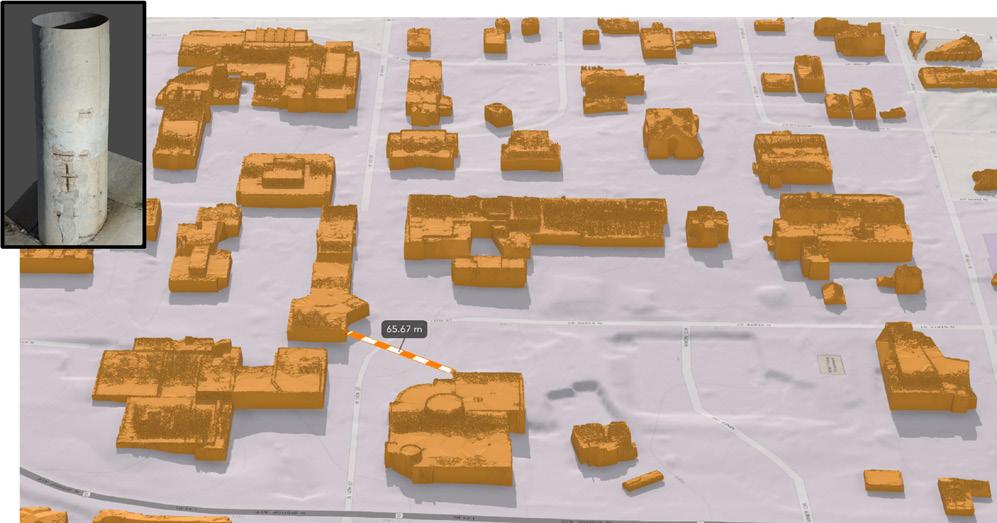
MULTIDIMENSIONAL DIGITAL TWIN IN THE BUILT ENVIRONMNENT TO SUPPORT MULTIFUNCTIONAL MODELING FOR BROADER IMPACTS
Presented: December 4, 2023, 10:00 AM-11:00 AM (CST)
Speaker: Dr. Genda Chen
Professor and Robert W. Abbett Distinguished Chair in Civil Engineering, Director of INSPIRE UTC, and Director of CII
As of April 30, the Kaleidoscope Discovery Center has supported robotics and engineering programming in our region and across the state that has reached over 2500 K-18 students through the FIRST Lego League and the Missouri Future City Competition. Continuing this level of outreach and engagement would simply not be possible without the generous sustained support from the INSPIRE UTC grant. The past year has further expanded robotics programming options which now include preK – age 18 on site and in the community. Additionally, Missouri was selected to pilot a high school Future City program, the first of its kind in over 30 years!
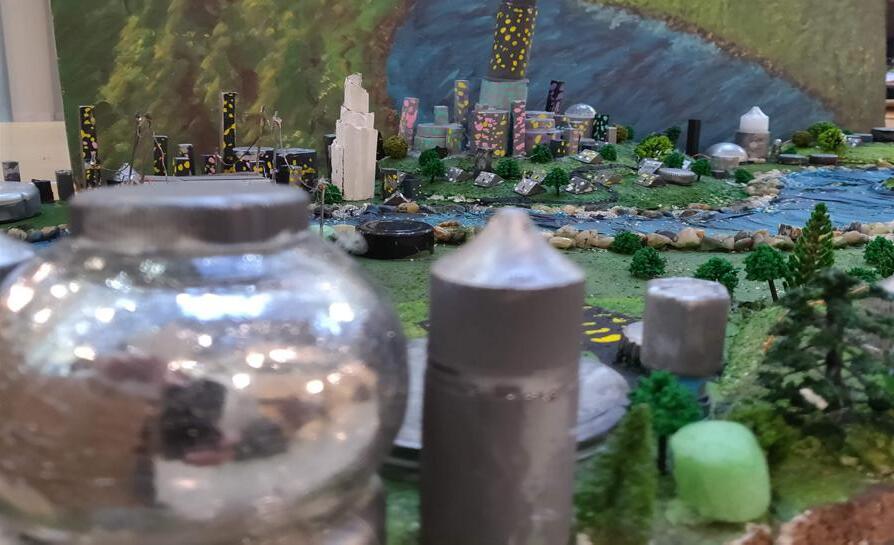
The preK-1st grade Robotics Discover program ran multiple times last year in five-week program sessions and the Kaleidoscope just completed its twelfth FIRST Lego League Explore cycle bringing 1-4th grade students from around the area to Rolla to celebrate and show off their creative designs at the April 6 Expo at Missouri S&T! The Lego League Challenge group which reaches 4th-8th grade students expanded from three to six competition-ready teams, one of which advanced to the Missouri State Competition. Additionally, through the assistance of the UTC grant, robots for this older class were updated from EV3s to Spike Primes allowing our rural area students to use the most current technology available for this level competition. And the newly formed FIRST Tech Challenge high school team won both the INSPIRE and Robot awards regionally earning a position at the state competition.
The Kaleidoscope received additional grant funding from AmeriCorps for a final year of robotics outreach support through the VISTA program which includes visits to area libraries, 4-H Camp Clover Kid presentations, Scouting robotics merit badge sessions, and Girl Scout STEM projects.
The Missouri Future City competition was held on January 20 in the Butler Carlton Hall on the Missouri S&T campus. Teams of five-ten 6th – 8th grade students presented their visions of “Energizing Your Future” to panels of professional engineer judges from across the state. Each team researched the current year’s theme and created a solution presented orally, in writing, and through the visual representation of a 50”x25”x20” model which contained at least one moving part, generally with a battery-powered robot mechanism. Die Gruenestadt, the Missouri team from St. Clair Middle School, was named our Missouri state winner and competed at the international competition in Washington, D.C. during the National Engineers Week in February. This year saw a record increase in the number of students participating in this engineering competition. Additionally, national Future City piloted a high school program and selected Missouri as one of 19 teams across the country. Delann, a combined team of students from Herculaneum and Rolla represented Missouri well place fourth internationally for their innovative design solutions. While the Missouri representatives competed in Washington, DC, the top five teams represented at the St. Louis Science Center’s ASCE STL private screening of #Cities of the Future opened by Marcia Geldert-Murphy, national ASCE president, and Martina Hahn-Baur, Missouri State Future City Coordinator. Over 250 people were present at this event!
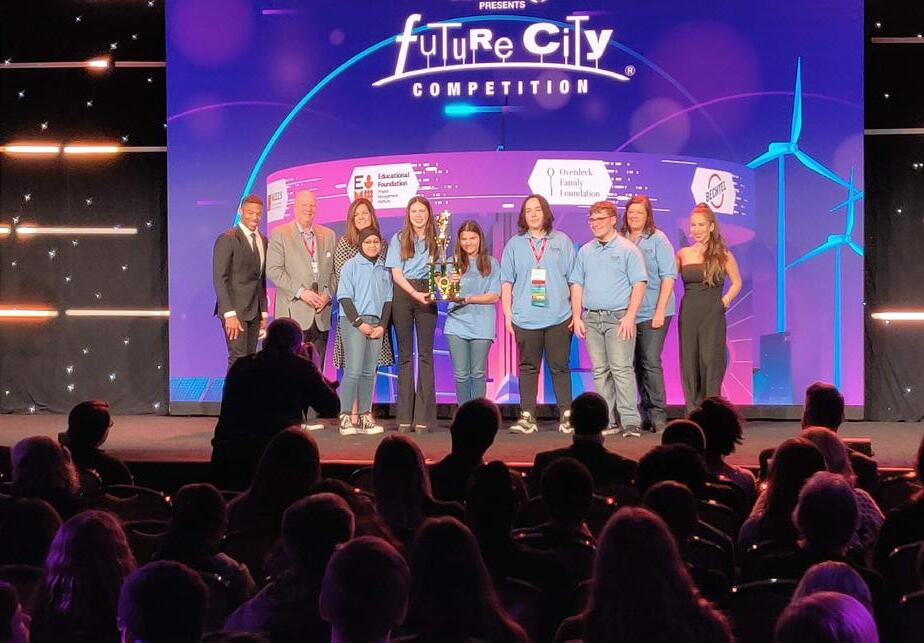
We are thrilled to see this expanded programming capturing and encouraging the interest in STEM in our rural area and also our students across the state. Thank you INSPIRE UTC for your support in reaching these STEM outreach goals with us!



On October 13, 2023, the Center for Intelligent Infrastructure (CII) as an umbrella organization to the INSPIRE UTC hosted 11 middle school girls and exposed them to emerging transportation infrastructure solutions in which women can play a significant role through STEM education. Specifically, the students witnessed the first hand on how infrastructure inspection will be aided by robotic exploration and augmented reality (AR) visualization through three sessions: (1) a powerpoint presentation for the CII introduction, (2) a tour of the CII’s three state-of-the-art lab facilities (REAL, VIRTUAL, and autonomous vehicles), and (3) three hands-on interactive activities. CII showcased bridge inspection using various drones (Tello drone, Geodetic, Phantom 4 drone, Skydio 2 Pro drone, Elios 3), AR interaction with virtual bridges, additive manufacturing (3D-printing), CII invented robots, and driving simulator. The students were curious about how much time it took to program the augmented reality devices and how the digital content was created. The three hands-on experience involved the driving simulator and two Microsoft Hololens collaborations. The driving simulator seemed to capture the high interest of students as they actively and enthusiastically participated in all scheduled activities.


On November 8, 2023, the CII welcomed and hosted 30 middle and high school students in two groups of 15 each. The intent of this event was to get the students excited with STEM education by demonstrating what a future STEM professional could mean for them. Specifically, the students got familiarized with infrastructure inspection aided by robotic exploration and AR visualization. Two separate introductory and walk-through sessions and a combined demo session were organized. The introductory session included a PowerPoint presentation on CII’s major activities, a tour of the CII’s three stateof-the-art lab facilities, and three hands-on interactive activities. For example, bridge inspections using Tello, Geodetic, Phantom 4, Skydio 2 Pro, and Elios 3 drones and using AR interaction with virtual bridges were highlighted. The students were curious about deployment time for various drones, sensors mounted on various drones, and drone interaction with the AR devices.
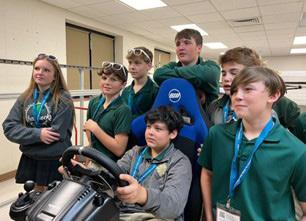
On February 22, 2024, the CII held an outreach event meant to celebrate the National Engineering week for approximately 31 students in three groups of 8, 14, and 9, respectively. The participants were drawn from home-schoolers in New Haven, Franklin Co, and Viburnum. The CII showcase began with a PowerPoint presentation to introduce CII’s main activities, was followed by a tour of three state-of-the-art lab facilities, and ended with three hands-on interactive activities. Specifically, droneassisted bridge inspection, AR interaction with virtual bridges, additive manufacturing (3D-printing), and hybrid flying and traversing robots were highlighted. The students were excited with various activities and asked how long it takes to create a drone, how much commercial drones cost, what are the regulatory requirements to fly a drone (e.g., drone registration, pilot permit, flight height, flying time), and whether the CII had any accidents using the heavy Geodetics drone. The students were enthusiastic with flying Tello drones and wearing Microsoft HoloLens 2 glasses to see both virtual and real worlds. The CII tour was given by Mr. Joshua Ghilino, an undergraduate student in computer science, Dr. Joel Runji, a post-doctoral fellow in mechanical engineering, and Dr. Zhenhua Shi, a research engineer in civil engineering).
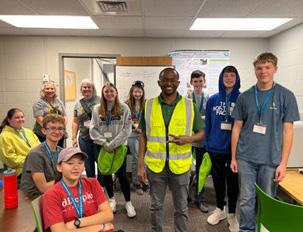
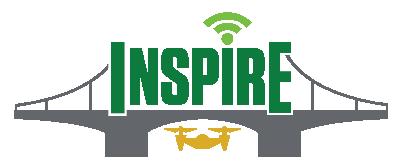
INSPIRE University Transportation Center
Missouri University of Science and Technology
112 Engineering Research Laboratory, 500 W. 16th St., Rolla, MO 65409
Connect with INSPIRE UTC:
• FACEBOOK: www.facebook.com/inspireutc
• X: www.x.com/inspire_utc
Connect with CII:
• FACEBOOK: www.facebook.com/MSTCII
• X: www.x.com/MST_CII
Contact Us
Phone: 573-341-6114 | Email: inspire-utc@mst.edu | Web: inspire-utc.mst.edu
Visit our website to follow us on social media.
Newsletter Editors
Genda Chen, INSPIRE UTC Director Natalie Goeddertz, INSPIRE UTC Program/Project Support Coordinator

June 10-12, 2024
CUTC Summer Meeting https://mycutc.org/events/2024-summer-meeting/.
June 16 -18, 2024
9th International Workshop on Structural Control and Monitoring (9IWSCM)
https://9iwscm.ethz.ch/
August 1 -4, 2024
The 1st International Conference on AI Sensors https://9iwscm.ethz.ch/
September 10-12, 2024
GNI Symposium & Expo on Artificial Intelligence for the Built World https://sciforum.net/event/aisi3s2024